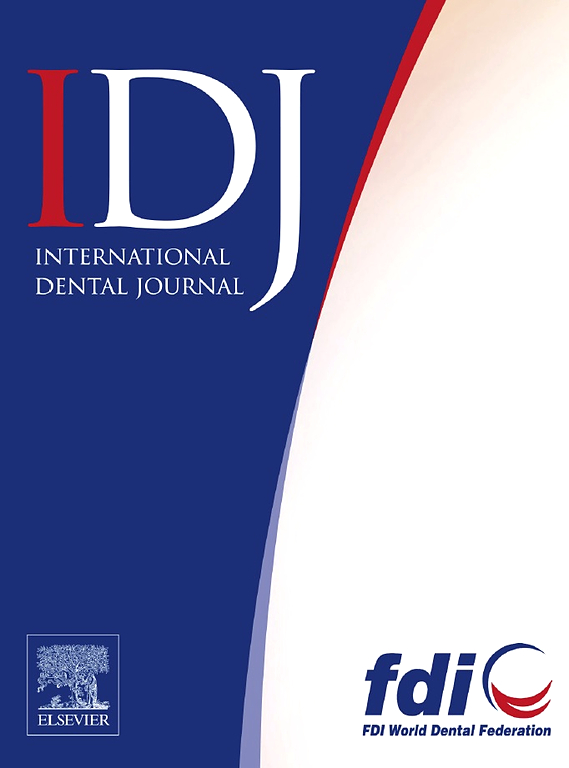Association of Immune Cell Phenotypes With Oral Cancer: A Two-Sample Mendelian Randomisation Study
IF 3.2
3区 医学
Q1 DENTISTRY, ORAL SURGERY & MEDICINE
引用次数: 0
Abstract
Objectives
The purpose of this study is to assess the potential causal relationship between immune cell phenotype and oral cancer using Mendelian randomisation analysis.
Methods
A two-sample Mendelian randomisation (MR) analysis using summary statistics from genome-wide association studies in European populations was conducted to explore causal relationships between immune cell phenotypes and the risk of oral cancer. Inverse-variance weighting, MR-EGGER, simple mode, weighted median, and weighted mode were applied for MR analysis. Sensitivity analyses, including the Steiger test, Cochran's Q test, Egger intercept, and leave-one-out analysis, were performed to assess the robustness of the results. Additionally, colocalisation analysis was carried out to further validate causal associations.
Results
A total of 21 immune cell phenotypes were identified as risk factors for oral cancer, while 6 immune cell phenotypes demonstrated protective effects. Sensitivity analyses indicated a lack of robustness in four causal relationships. Genetic variants at rs9469077 on chr6 might be shared between CD28–CD127–CD25++CD8br AC of regulatory T cells and oral cancer.
Conclusion
This MR study provides evidence for a strong association between immune cells and oral cancer, highlighting specific immune cell phenotypes as significant risk factors for the development of oral cancer. These findings offer a foundation for future precision immunotherapy strategies for oral cancer. Further studies are required to confirm the relationship between immune cells and oral cancer risk and to elucidate the underlying mechanisms.
Clinical Relevance
This study confirms the potential relationship between specific immune cell phenotypes and oral cancer, providing theoretical support for future immunotherapy against oral cancer.
免疫细胞表型与口腔癌的关联:一项双样本孟德尔随机研究
目的本研究的目的是利用孟德尔随机化分析来评估免疫细胞表型与口腔癌之间的潜在因果关系。方法利用欧洲人群全基因组关联研究的汇总统计数据进行双样本孟德尔随机化(MR)分析,探讨免疫细胞表型与口腔癌风险之间的因果关系。MR分析采用反方差加权、MR- egger、简单模型、加权中位数和加权模型。采用敏感性分析,包括Steiger检验、Cochran’s Q检验、Egger截距和留一分析来评估结果的稳健性。此外,还进行了共定位分析以进一步验证因果关系。结果共有21种免疫细胞表型被鉴定为口腔癌的危险因素,6种免疫细胞表型具有保护作用。敏感性分析表明,四种因果关系缺乏稳健性。chr6上rs9469077位点的遗传变异可能在调节性T细胞的CD28-CD127-CD25 ++CD8br AC和口腔癌之间共享。结论本MR研究为免疫细胞与口腔癌之间的密切联系提供了证据,强调了特定免疫细胞表型是口腔癌发展的重要危险因素。这些发现为未来口腔癌的精准免疫治疗策略提供了基础。需要进一步的研究来证实免疫细胞与口腔癌风险之间的关系,并阐明其潜在机制。临床意义本研究证实了特异性免疫细胞表型与口腔癌之间的潜在关系,为未来针对口腔癌的免疫治疗提供理论支持。
本文章由计算机程序翻译,如有差异,请以英文原文为准。
求助全文
约1分钟内获得全文
求助全文
来源期刊

International dental journal
医学-牙科与口腔外科
CiteScore
4.80
自引率
6.10%
发文量
159
审稿时长
63 days
期刊介绍:
The International Dental Journal features peer-reviewed, scientific articles relevant to international oral health issues, as well as practical, informative articles aimed at clinicians.
 求助内容:
求助内容: 应助结果提醒方式:
应助结果提醒方式:


